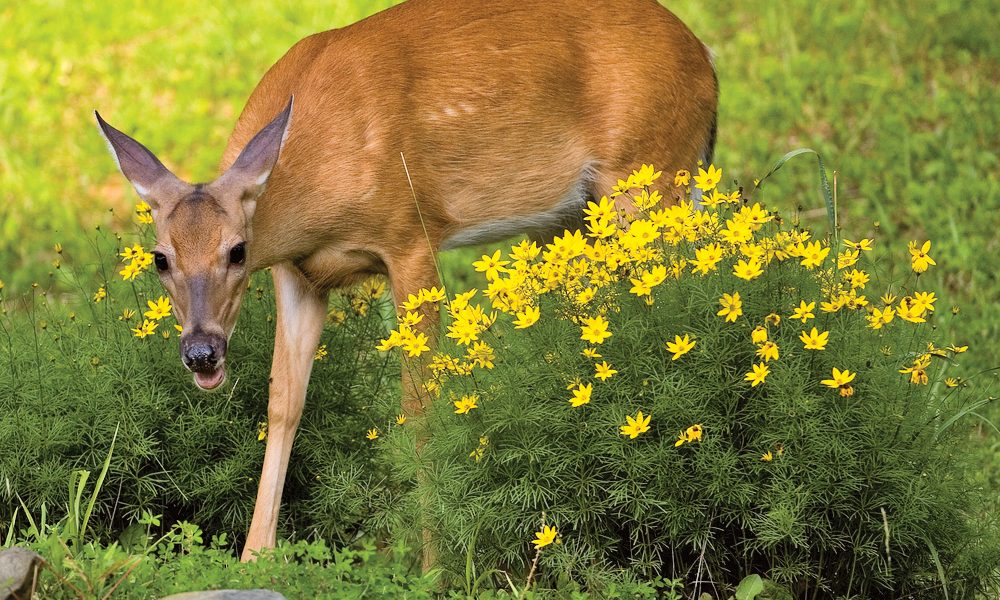Home & Living
Trowel Talk
Yes, you can deer-proof your garden: Remember, you’re supposed to be smarter than they are.
Deer: In this region, they’re everywhere, from the rural woods and
fields of Howard County to the suburban developments north of Towson and
even the outer neighborhoods of Baltimore City. And boy, can Bambi do
some damage.
Of course, there’s the obvious millions of dollars in
repairs to autos annually when they try to cross interstates, and the
fence damage a leaping doe can do in the fall rutting season while
escaping Billy Buck’s unwanted advances. But they also can wreak havoc
on gardens, from trampling flower beds and nibbling the blossoms off
roses to damaging young trees with their antler-rubbing routine.
But
those who’ve been visited by deer might have noticed they didn’t touch
the herb garden, or the sunflowers, or the purple coneflowers. So, you
might ask, what do they eat, what do they stay away from, and how can
homeowners protect a season’s gardening work from these 200-pound,
hoofed invaders?
We should probably try to look at it from their
point of view: Since humans are forever entering their domain by
building farther out, cutting down trees, and destroying woodland
settings, deer have no choice but to enter our suburban gardens. And
here, they pretty much eat anything that’s available to survive. But,
there are a number of things we can do to deter them and minimize the
damage.
The most effective barrier is putting up a tall stockade
fence, which can be fortified with added wiring at the top. In some
neighborhoods, metal grate fencing is more aesthetically acceptable. Of
course, many homeowners are restricted by zoning laws and covenants from
erecting certain types of fences. So what about the deer deterrents
sold at nurseries and garden centers?
They can help, but savvy
gardeners know from experience that they’d have to rotate products and
their scents repeatedly, only to find that this highly adaptable animal
may outsmart them eventually and eat the plants anyway.
The good
news is deer strongly dislike plants with leaves containing a milky
substance, a bitter taste, hairy or prickly stems, or rough, leathery
leaves. They usually avoid strongly scented plants, including almost all
herbs. And it’s easy to use these secrets as you design an
almost-deer-proof garden.
Include a good mix of aromatic herbs,
such as chives, onions, dill, fennel, anise, rosemary, mint, lavender,
and thyme. Plant them in groups of three in a sunny location in
well-drained soil. Position plants either in front of vulnerable
vegetation or mix them in to confuse the deers’ sensitive noses. Among
species that deer tend to avoid are yarrow, columbine, foxglove (which
is toxic), Joe-Pye-weed (it’s scratchy), baby’s breath, Lenten rose
(toxic), shasta daisy (it has rough leaves and stems), rugosa rose
(extremely thorny stems), and Russian sage (highly fragrant).
There, you’ve done it: If there was a Michelin restaurant guide for deer on the top 10 places to avoid, you’d make the list.
